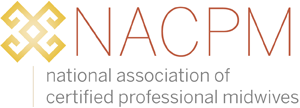Maternity care in the United States is unnecessarily expensive and does not produce the best results. Midwives know it and now leading experts in health care payment reform agree. But whether CPMs will be seen as part of the solution and whether CPMs are prepared to participate in the new payment reform models are open questions.
A landmark white paper on payment reform was released this summer by the Health Care Payment Learning & Action Network (LAN): Accelerating and Aligning Clinical Episode Payment Models. Interestingly, maternity care is one of three clinical areas explored in-depth in the LAN paper, with recommendations for implementing new payment models.
For a brief overview see the LAN Fact Sheet on Clinical Episode Payment Models: Maternity Care
You can also read the full White Paper here.
The LAN was created to drive alignment in payment approaches across and within the public and private sectors of the U.S. health care system. More than 100 entities are LAN partners, including major health plans, academic centers, government agencies, consumer groups and private employers. In keeping with the goals of US Department of Health and Human Services, the LAN aims to have 30% of U.S. health care payments in alternative payment models by 2016 and 50% by 2018.
According to the LAN, one promising area for payment innovation and alignment is in payment for “episodes of care” to improve patient outcomes, enhance health system performance, and control costs. A clinical episode payment is a bundled payment for a set of services that occur over time and across settings. Bundling payments for episodes of care shows promise for reducing costs and improving the quality of care.
An entire chapter of the LAN white paper examines maternity care – cost and quality of current system – with recommendations for designing new payment models that include the definition of clinical episode, population, patient engagement, quality metrics, and so on. According to the authors of the paper, the goal of episode payment should go beyond lowering costs, and that it should be designed such that it supports a more patient-centered approach to care. Specific goals of maternity episode payment include:
Increasing the percentage of vaginal births and decreasing unnecessary cesarean births;
Increasing the percentage of births that are full-term and decreasing preterm and early elective births;
Decreasing complications and mortality, including readmissions and neonatal intensive-care unit (NICU) use;
Providing support for childbearing women and their families in making critical decisions regarding the prenatal, labor and birth, and postpartum phases of maternity care and respecting those choices;
Increasing the level of coordination across providers and settings of maternity care; and
Consistently providing a woman- and family-centered experience.
Karen Milgate, the Clinical Episode Payment Work Group’s Technical Subject Matter Expert for the Health Care Payment Learning & Action Network, will discuss the white paper and the maternity care recommendations at length on NACPM’s webinar on payment reform on October 27th. As former Deputy Director of the Center for Strategic Planning within the Centers for Medicare & Medicaid Services (CMS), Karen is a seasoned health care policy executive with a deep knowledge of Medicare and Medicaid policies, programs, operations, and data.
Note: NACPM’s bundled payment proposal is cited in the LAN white paper appendix on maternity care implementation resources.
Maternity Neighborhood Blog
Brynne Potter of Maternity Neighborhood has posted a series of excellent pieces on Business Strategies for Payment Reform that also address clinical episode payment and what midwives need to be thinking about. Maternity Neighborhood is a mission-driven company with a portfolio of digital tools to support woman-centered, relationship-based maternity care. These tools can be configured in a variety of ways to meet the needs of providers, patients, and care navigators.
Other Learning Resources
Catalyst for Payment Reform. Action Brief: Maternity Care Payment.
Center for Health Care Quality and Payment Reform
Reform Opportunities: Maternity Care
Transforming Maternity Care: How Payment Reform Can Lower Costs and Improve Quality
Pacific Business Group on Health. Transform Maternity Care (TMC) Advancing high-value maternity care. December 2014.
Whitman, Elizabeth. Bundles of joy? How new payment models for maternal care could deliver lower costs Modern Health Care, August 13, 2016
PLEASE READ THE FULL NEWSLETTER HERE
